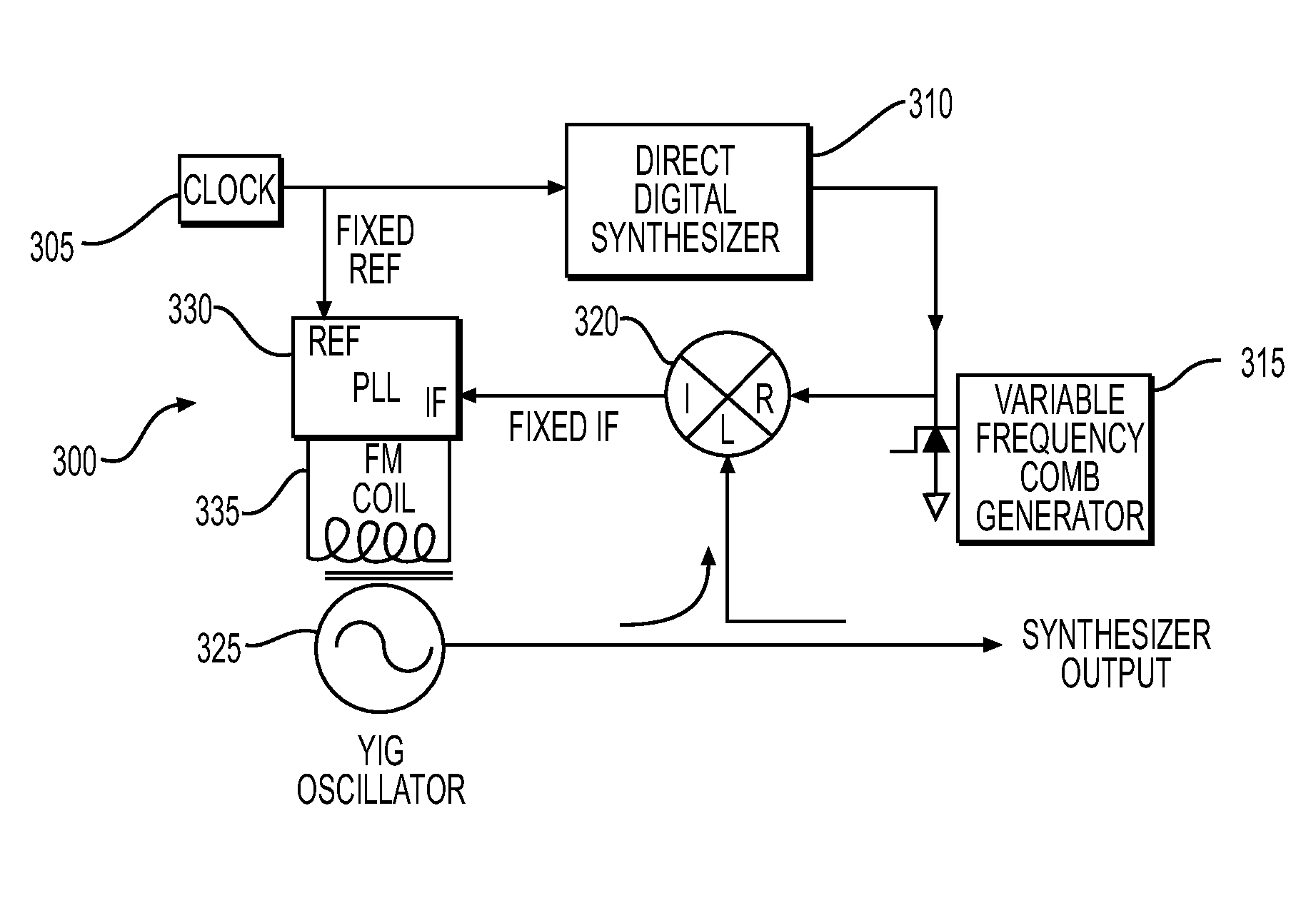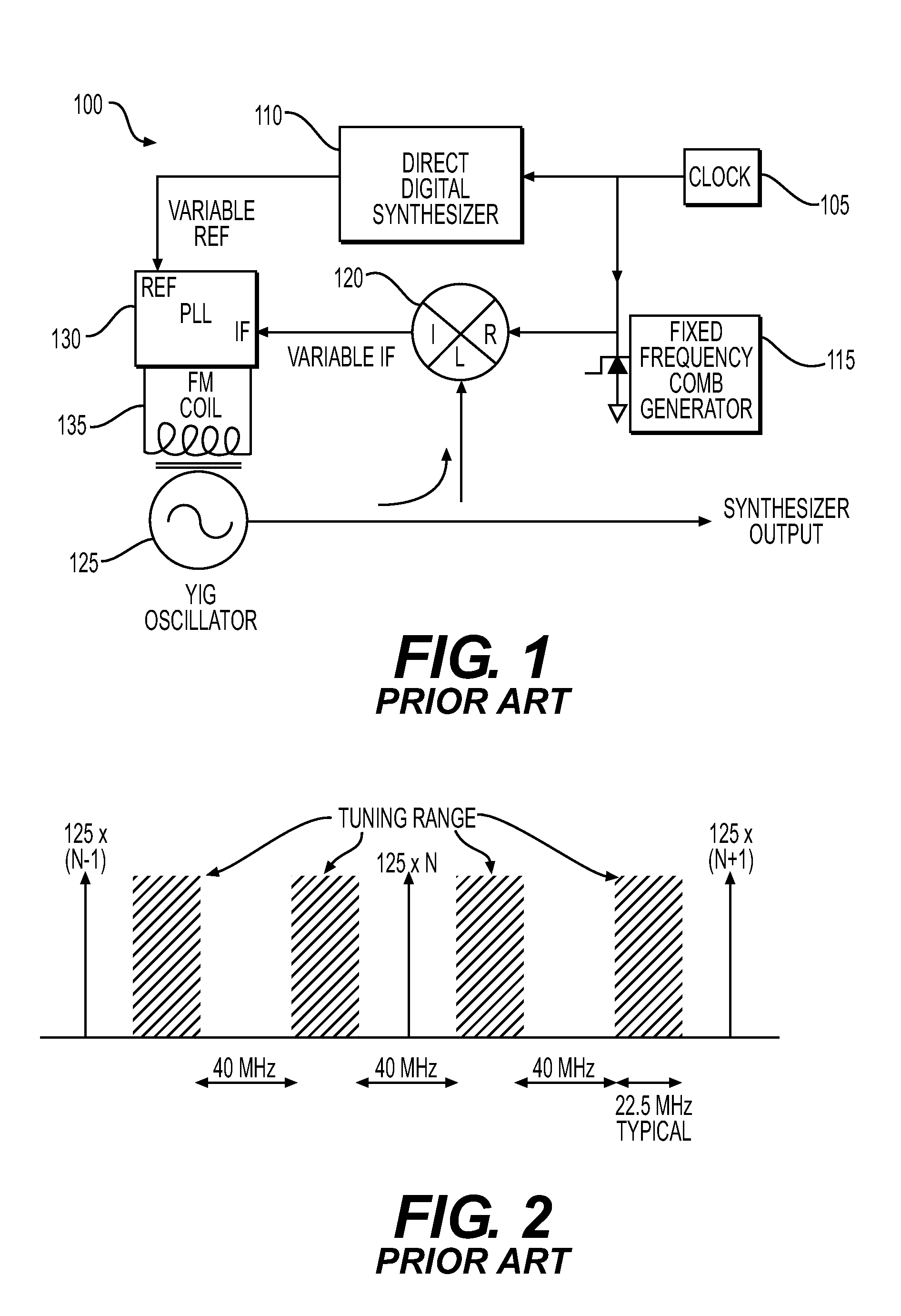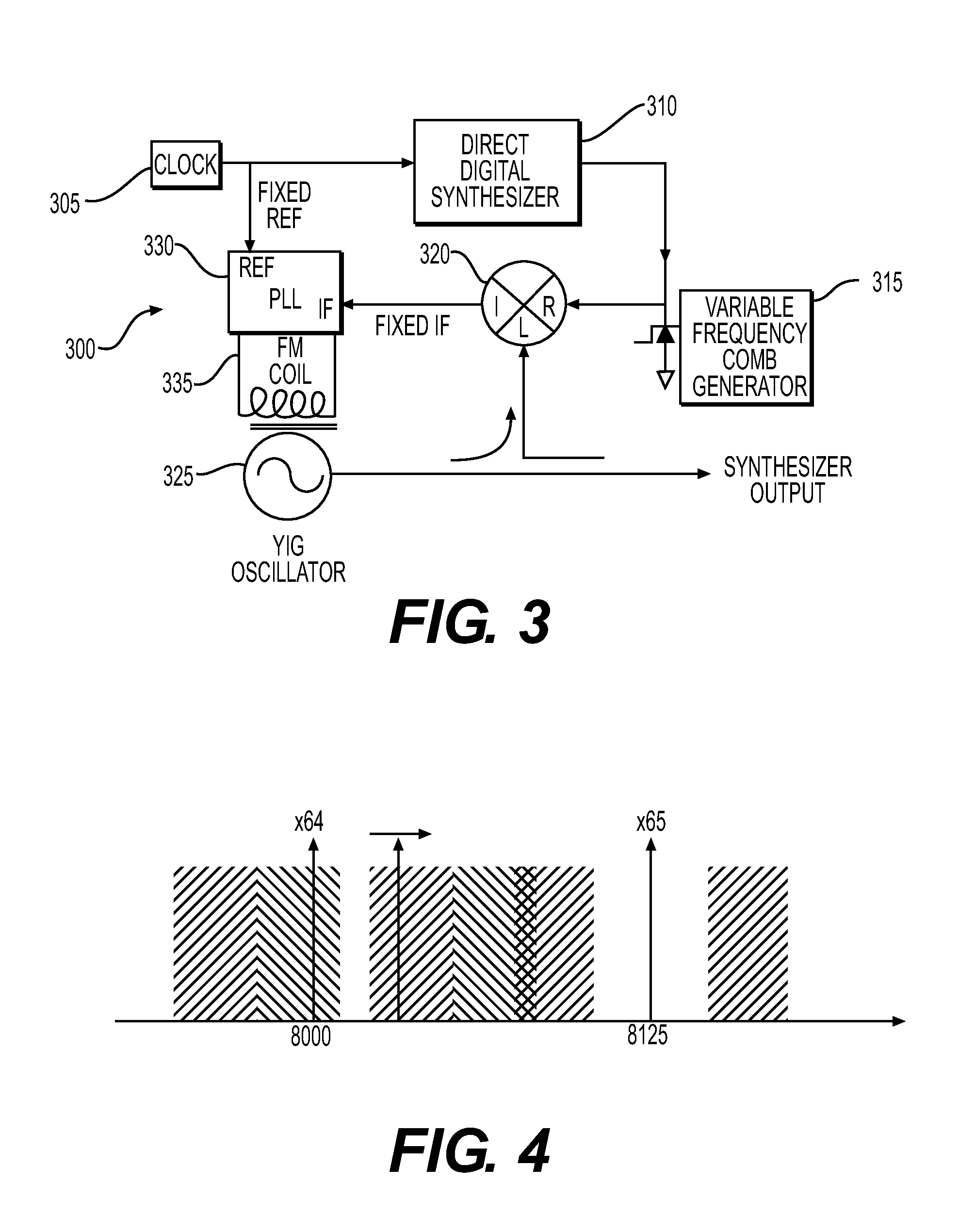Synthesizer method utilizing variable frequency comb lines and frequency toggling
a variable frequency comb line and frequency toggling technology, applied in the field of synthesizers, can solve problems such as inability to adjust the output frequency range, and inability to achieve the desired frequency variation,
- Summary
- Abstract
- Description
- Claims
- Application Information
AI Technical Summary
Benefits of technology
Problems solved by technology
Method used
Image
Examples
example
[0085]Using synthesizer 300 with the clock frequency set to 500 MHz, the nominal comb line space at ⅔ of the clock or 333.333 MHz (e.g. at the 2nd Nyquist zone), the maximum DDS tuning range set to 35 MHz, FIG. 9 shows the nominal comb lines in the 14-15 GHz range with a desired synthesizer output frequency of 14500 MHz. The comb lines lower than the desired frequency are successively move up to either ±100 MHz from the desired output frequency by adjusting upward the DDS frequency (like an accordion).
[0086]In the example, the closest comb line on the low side is times 43 and the desired output frequency can be phased locked to comb lines as low as the nominal clock frequency time 40 without violation the maximum tuning range of the DDS (see Table 1). The tuning is determined by calculating the difference between the desired comb to lock to and the desired IF (high or low) and dividing by the comb line harmonic number. 14400 MHz minus 14333.3 divided by 43 is the tuning step beyond ...
PUM
 Login to View More
Login to View More Abstract
Description
Claims
Application Information
 Login to View More
Login to View More - R&D
- Intellectual Property
- Life Sciences
- Materials
- Tech Scout
- Unparalleled Data Quality
- Higher Quality Content
- 60% Fewer Hallucinations
Browse by: Latest US Patents, China's latest patents, Technical Efficacy Thesaurus, Application Domain, Technology Topic, Popular Technical Reports.
© 2025 PatSnap. All rights reserved.Legal|Privacy policy|Modern Slavery Act Transparency Statement|Sitemap|About US| Contact US: help@patsnap.com



